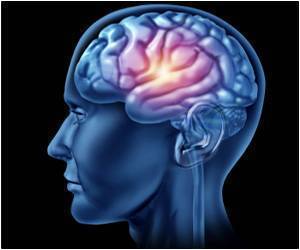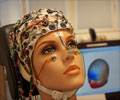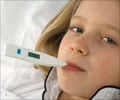A method with which the chances of success of a surgical procedure for temporal lobe epilepsy can be accurately predicted was developed by scientists.
A method with which the chances of success of a surgical procedure for temporal lobe epilepsy can be accurately predicted was developed by scientists at Bonn University Hospital and at the Max Planck Institute for neurological research in Cologne. The rate of accurate predictions is more than 90%. The results are now being presented in the scientific journal "
NeuroImage:Clinical."
When many nerve cells simultaneously fire in the brain, an epileptic seizure results. The most frequent form is temporal lobe epilepsy. It originates in one of the two temporal lobes which contain, among other things, important structures for coordinating memory. Because many patients do not respond to medication over the long term, the seizure focus in the affected temporal lobe is often removed in a neurosurgical procedure. However, approximately one-third of patients who undergo surgery do not experience any subsequent improvement. "The procedure is associated with risks -- therefore a reliable prognosis regarding the chances of success is very important," says Prof. Dr. Bernd Weber from the Department of Epileptology of Bonn University Hospital.
An Algorithm Assesses Patients' Brain Images
At the Life&Brain Center, the Bonn epilepsy specialists, together with scientists from the Max Planck Institute for Neurological Research in Cologne, have found a way for the chances of success of a temporal lobe procedure in epilepsy patients to be predicted with a striking degree of accuracy. The researchers used images from magnetic resonance imaging from a total of 49 epilepsy patients who had previously undergone surgical removal of the seizure focus in the left temporal lobe. Using a special computer program developed by Lisa Feis from the Max Planck Institute as a part of her dissertation, the scientists looked at the brain images for differences between the patient group whose seizures had improved following surgery and those with unchanged symptoms. "Using brain images, we trained the algorithm to differentiate in the best possible way between seizure-free and non-seizure-free patients," reports Prof. Weber.
Hitting the Mark with Striking Accuracy
Using the algorithm results, the scientists then calculated the chances of success of an intervention and compared them with the actual findings after the surgery. Because the brains of women and men differ, for example in the symmetry of the halves of the brain, the researchers evaluated the data according to gender. The rate of accurate predictions was 96% in the case of female patients and 94% in the case of male patients.
Additional Research Needed Advertisement
The tests have been performed retrospectively to date: The researchers applied the method retrospectively on patients who have already undergone surgery. As the next step, the scientists want to examine how well the method predicts chances of success in epilepsy patients who still have yet to undergo a procedure on the temporal lobe. Other university medical centers and even more detailed imaging procedures will be included in this. "At present, we are still at a stage that is too early for clinical application; further research is needed," says Prof. Dr. Christian Elger, director of the Bonn Epilepsy Clinic.
Source-Eurekalert
















